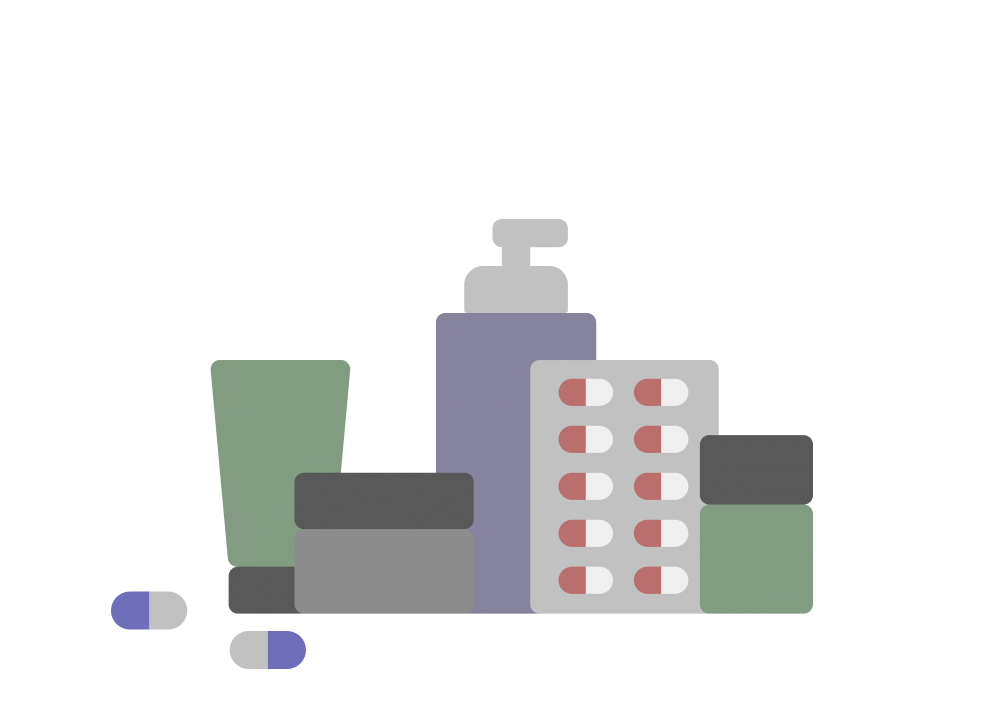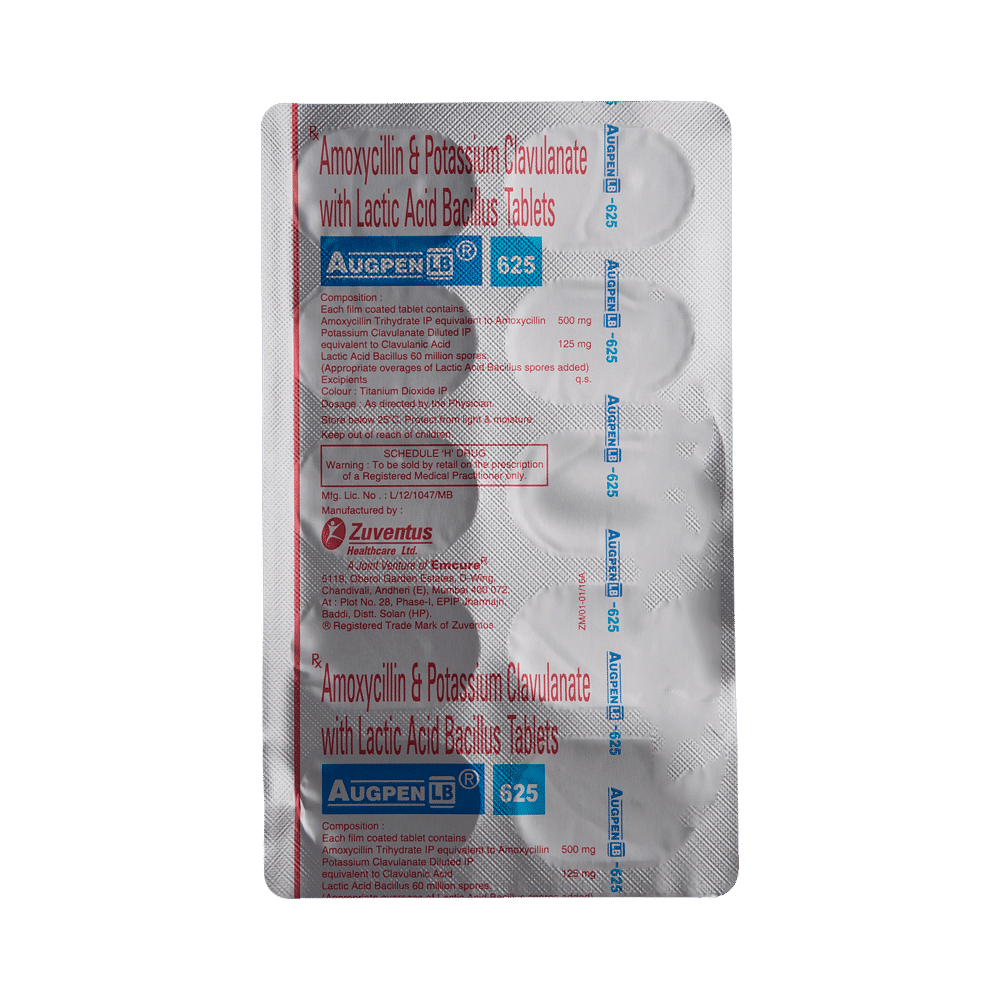
Wilmox-CV LB Tablet
Manufacturer
Alvoncare Pharma
Salt Composition
Amoxycillin (500mg) + Clavulanic Acid (125mg) + Lactobacillus (60Million spores)
Key Information
Short Description
Wilmox-CV LB Tablet is a combination medicine used to treat various types of bacterial infections and prevent diarrhea.
Dosage Form
Tablet
Introduction
Wilmox-CV LB Tablet is a combination medicine that effectively treats various bacterial infections. It works by fighting against microorganisms to prevent their growth and spread. Additionally, it helps prevent diarrhea, a common side effect of antibiotics. The medicine contains Amoxycillin, Clavulanic Acid, and Lactobacillus, which work together to treat infections and maintain gut health. However, it is important to complete the prescribed course to avoid the recurrence of infection. Consult your doctor if you experience any severe side effects such as an itchy rash, swelling, or breathing difficulties.
Directions for Use
Take Wilmox-CV LB Tablet with food and plenty of fluids to avoid an upset stomach. Follow the prescribed dosage and complete the full course of treatment even if you start feeling better.
How it works
Wilmox-CV LB Tablet combines Amoxycillin, Clavulanic Acid, and Lactobacillus. Amoxycillin prevents the formation of bacterial protective covering, Clavulanic Acid reduces resistance and enhances Amoxycillin's activity, and Lactobacillus restores the balance of healthy gut bacteria.
Quick Tips
You have been prescribed this combination medicine to treat bacterial infections even if they have developed resistance. Take it with food and plenty of fluids to avoid an upset stomach. Finish the prescribed course even if you start to feel better. Stopping it early may make the infection come back and harder to treat. Diarrhea may occur as a side effect. Taking probiotics along with Wilmox-CV LB Tablet may help. Talk to your doctor if you notice bloody stools or develop abdominal cramps. Stop taking Wilmox-CV LB Tablet and inform your doctor immediately if you develop an itchy rash, swelling of the face, throat or tongue, or breathing difficulties while taking it.
Related Medicines

Augpen LB 625 Tablet

Clavonate 625 LB Tablet

Amorik CV LB 500mg/125mg Tablet

Rolclav 500mg/125mg Tablet

Zoxlin CV LB 500mg/125mg Tablet

Medclu LB 500mg/125mg Tablet

Ofymox LB 625 Tablet

Ozimentin LB 500mg/125mg Tablet

Moxsta CV LB 500mg/125mg Tablet

Amexosyn 625 LB Tablet
Frequently asked questions
What are the contraindications associated with the use of Wilmox-CV LB Tablet?
Wilmox-CV LB Tablet is contraindicated in patients with a history of allergic reactions to any penicillin. Additionally, it is avoided in patients with a previous history of cholestatic jaundice/liver dysfunction associated with the medicine. Patients with such medical histories should consult their doctor before taking this medication.
Which is the best time to take Wilmox-CV LB Tablet?
Wilmox-CV LB Tablet should be taken as directed by your doctor, either every 8 hours or every 12 hours. It is recommended to take the medication with a meal or snack to reduce the risk of stomach upset. It is also important to note that antibiotics like Wilmox-CV LB Tablet can cause diarrhea. If diarrhea is severe or persists for more than 2-3 days, patients should consult their doctor.
Can I stop Wilmox-CV LB Tablet in between if I feel better?
No, it is essential to complete the full course of therapy as prescribed by your doctor, even if you start feeling better. Skipping doses or not completing the full course of therapy may reduce the effectiveness of the immediate treatment and lead to the development of antibiotic resistance.
Can I take Wilmox-CV LB Tablet if I am allergic to penicillin?
If you have had an allergic reaction to one type of penicillin, you may be allergic to ampicillin or cephalosporins, but not necessarily. It is crucial to inform your doctor about any history of penicillin allergy before taking Wilmox-CV LB Tablet.
What are the instructions for the storage and disposal of Wilmox-CV LB Tablet?
Wilmox-CV LB Tablet should be stored in its original packet or container, tightly closed, and according to the instructions mentioned on the pack or label. Unused medication should be disposed of properly to prevent accidental consumption by pets, children, or other individuals.


